Jul
30
2020
 The evidence for this has been building over the last few years, and we are now at the point where it is reasonable to act on the evidence. Replacing wood, plastic, and stainless steel surfaces in hospitals with those either made of copper or embedded with copper significantly reduces bacteria and viruses (microbial burden, or MB) on those surfaces.
The evidence for this has been building over the last few years, and we are now at the point where it is reasonable to act on the evidence. Replacing wood, plastic, and stainless steel surfaces in hospitals with those either made of copper or embedded with copper significantly reduces bacteria and viruses (microbial burden, or MB) on those surfaces.
I am always suspicious of claims of ancient uses of healing methods, because there were many ancient cultures and collectively they pretty much did everything as a healing remedy. So the fact that we can cherry pick examples of some ancient society using copper to treat infections is not that impressive. They also used it for things for which it has no effect. But having said that, it was in fact used in wounds and to treat diseases in several ancient cultures. And copper does legitimately reduce the chance of infection.
It does this by leaching electrons from bacteria, which causes a charge to build up inside the cell which ultimately leads to free radical formation and cell death. Many studies have now shown that the microbial burden on copper surfaces is reduced by >80% compared to traditional surfaces. When used on frequently touched surfaces in hospitals, this can significantly reduce the amount of bacteria hanging around. Another study showed that the total reduction in bacteria from a copper alloy surface was 99.9% (compared to baseline, not to control surfaces). In controlled studies, copper surfaces work as advertised – they kill bacteria and viruses.
Continue Reading »
Jul
27
2020
 The Alaska Supreme Court just reaffirmed a very important legal and ethical principle – declaring that prayer is not a replacement for medicine. While this may seem obvious to many, this is a critical legal decision. It will probably not have the downstream effect that it should, but it does highlight a vital reality.
The Alaska Supreme Court just reaffirmed a very important legal and ethical principle – declaring that prayer is not a replacement for medicine. While this may seem obvious to many, this is a critical legal decision. It will probably not have the downstream effect that it should, but it does highlight a vital reality.
The case involves Rachel “O”, who has been taking care of her mother, Tiffany “O”. Rachel states that because she graduated from a ministry school she is qualified to treat her mother solely with prayer, including her mother’s epilepsy, and emergency treatment. The essence of the ruling is this:
“If Tiffany required immediate medical attention, the results could be fatal,” the court concluded. “For this reason, while religious liberty is a fundamental right under the Alaska Constitution, the state’s actions in this case are justified by a compelling interest.”
Generally, when the Constitution or other laws establish that people have certain rights, the state cannot infringe upon those rights, unless the state has a “compelling interest” that is deemed by the courts to be greater than the infringement on individual rights. This is a balancing act, and can sometimes lead to controversial decisions. Eminent domain is an example – we have a right to property and the state cannot seize our property, unless they have a compelling public interest in eminent domain (they need to build a highway through your property). This is meant to balance public interest with individual interest. This became highly controversial because of the Kelo vs New London case, in which the Supreme Court expanded eminent domain to include the state’s interest in maximizing its taxation.
Continue Reading »
Jul
24
2020
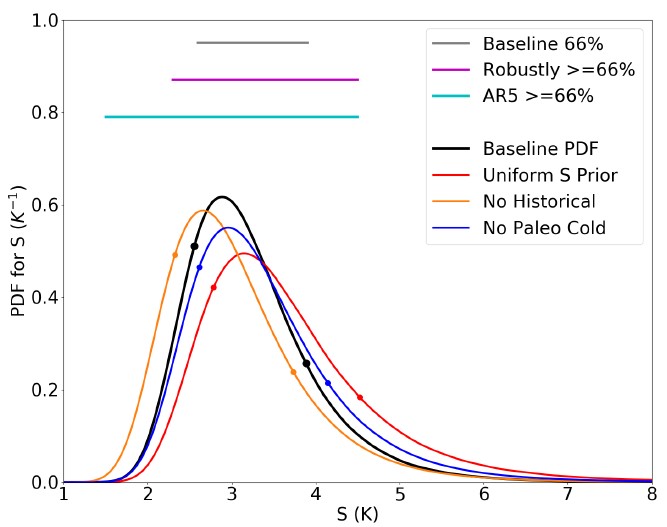 There are various (non-mutually exclusive) ways to deny science. You can cherry pick the data and sources you like – there is always someone on the fringe with an opinion counter to the mainstream. You can use the all-purpose method of invoking a grand conspiracy theory. You can replace scientific opinion with pseudoscience. Or, if you have sufficient background scientific knowledge, you can magnify the uncertainty and disagreements that exist in all theories to make it seem like the core claims are in doubt, when they aren’t.
There are various (non-mutually exclusive) ways to deny science. You can cherry pick the data and sources you like – there is always someone on the fringe with an opinion counter to the mainstream. You can use the all-purpose method of invoking a grand conspiracy theory. You can replace scientific opinion with pseudoscience. Or, if you have sufficient background scientific knowledge, you can magnify the uncertainty and disagreements that exist in all theories to make it seem like the core claims are in doubt, when they aren’t.
One of the primary targets for those who deny climate change and rely on the latter method is to focus on the notion of climate sensitivity. It is clear that CO2 is a greenhouse gas, only the most hard-core conspiracy theorist climate deniers deny that basic fact. Therefore, increasing the amount of CO2 in the atmosphere should increase this warming effect, and warm the planet. There are obviously many more technical layers to the process, including positive and negative feedback loops, other greenhouse gases, reactive gases that amplify the effect, and other factors that influence the climate. But the simple fact that increasing CO2 increases warming is essentially correct and non-controversial among experts.
So if you want to claim that CO2 release from human activity is no problem, you need to argue that the magnitude of the effect is too small to worry about. This is what climate sensitivity is – specifically defined as the amount of warming from pre-industrial levels that would ultimately result from a doubling of CO2 in the atmosphere. If we look at the last million years CO2 level fluctuated from around 200-280 ppm (parts per million). Over the last 100 years this amount has increased steadily, and is now over 410 ppm. How long it will take to double the CO2 depends on what we do, but unless there is a major change to our energy and industry infrastructure, we will get there by the end of the century.
Continue Reading »
Jul
23
2020
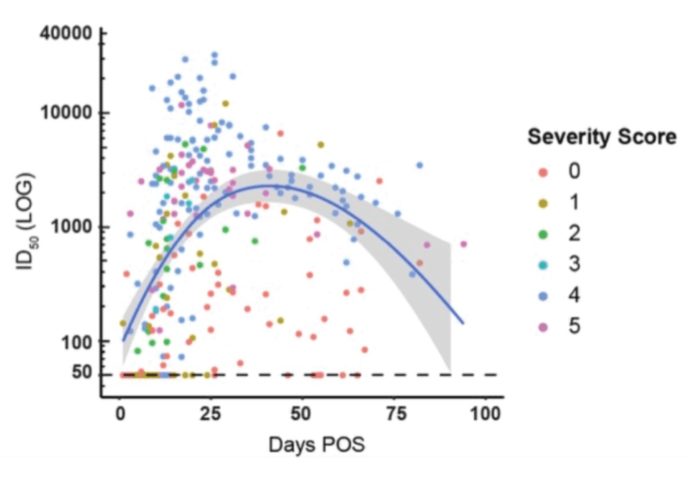 One of the challenges of dealing with the COVID-19 pandemic, both on an individual patient level and public health level, is that this is a novel virus. We don’t yet have a lot of experience with it or clinical data about how it behaves, what it is capable of doing, and how the immune system deals with it. We are learning fast, but there is still much we don’t know, especially, of course, about long term effects.
One of the challenges of dealing with the COVID-19 pandemic, both on an individual patient level and public health level, is that this is a novel virus. We don’t yet have a lot of experience with it or clinical data about how it behaves, what it is capable of doing, and how the immune system deals with it. We are learning fast, but there is still much we don’t know, especially, of course, about long term effects.
One burning question is – what are the prospects for developing natural herd immunity as the infection spreads throughout communities? Herd immunity (or community immunity) occurs when enough people in a population are resistant to infection due to having effective antibodies that the infection cannot easily spread. This is how epidemics or pandemics burn themselves out – eventually enough people have already been infected and are resistant that the virus cannot find receptive hosts and stops spreading. The percent of the population with resistance needed to achieve herd immunity varies with each type of infection, and can be as high as 90+%. Here are some of the unknowns with COVID-19.
Do people who get infected develop neutralizing antibodies with sufficient activity to resist reinfection?
How severe an illness is required to develop these antibodies? Is a mild or asymptomatic infection enough?
Do these antibodies prevent reinfection alone or do they also prevent passing the virus on to others, even if the host does not get sick themselves?
How long do these antibodies last?
Continue Reading »
Jul
20
2020
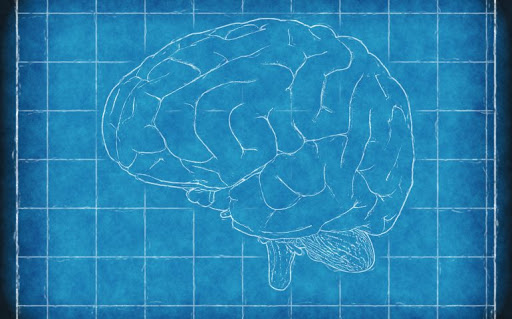 Here’s another brain glitch that I know I do on a regular basis – confusing the intention to do a task with having actually completed the task. This is a type of false memory created by the intention itself. Albarracin et al have published a series of five experiments where they explore this phenomenon, which they claim is new to the published literature.
Here’s another brain glitch that I know I do on a regular basis – confusing the intention to do a task with having actually completed the task. This is a type of false memory created by the intention itself. Albarracin et al have published a series of five experiments where they explore this phenomenon, which they claim is new to the published literature.
In there experiments people reported having completed a task that they only thought about doing but never actually did. If the task is routine this is more likely to happen. For example, if you take medication every day, you might remember taking the medication when you didn’t partly because you already have so many memories of actually taking the medication. Just having the thought – I need to take my medication – may be enough to trigger a false memory of taking it when you later think back about whether or not you took the medication. The experiments show that forming the intention to do the task increases the likelihood of forming such false memories.
The situation is also a factor. The closer the intention is to the actual task, the more likely it is you will form such a false memory of task completion. In other words, if you are sitting at your desk and you make a mental note that you have to do some task at your desk (such as sending an e-mail or signing a form), you may later remember having completed the task. This is more likely to occur than if the task involved traveling to a new location. They report:
Participants chose job candidates and either acted on the decision to hire them, generated an intention to hire them later or made a judgment that was irrelevant to the behavior.
Following a delay, participants were asked to report whether they had acted on the decision or simply intended to do so for each person they had seen.
“The methodology was carefully crafted to produce the necessary high level of errors we were studying, to keep irrelevant characteristics constant across conditions, and to systematically manipulate enactment versus intention,” said Albarracin, also a professor of business administration at Illinois. “If intentions play a causal role in producing misreports of behavior, misreports should be more common in the intention than the control condition.”
Continue Reading »
Jul
17
2020
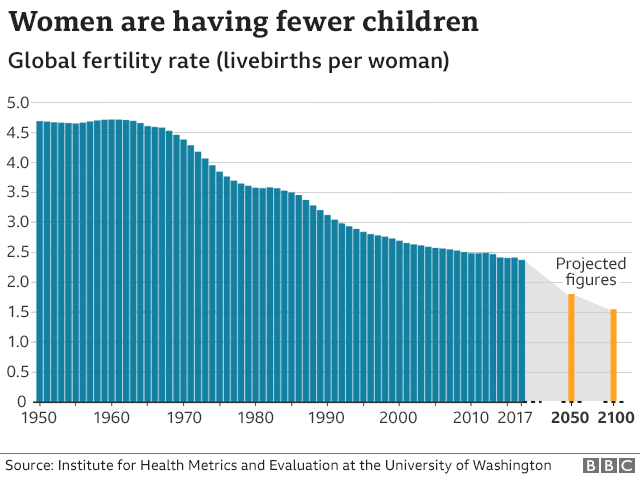 I often discuss the fact that the world’s population is set to approach 10 billion people by 2060 or so. Right now we are approaching 8 billion. This is a potentially serious issue, mainly for food security. We are already using most of the arable land on the planet, and will need to produce more food on the same, or hopefully less, land if we are to sustain these populations without devastating ecosystems (more than we already have). We also need to produce enough energy and goods while dealing with that whole global warming thing. So many people might find it interesting that some scientists are warning about a coming decline in human populations.
I often discuss the fact that the world’s population is set to approach 10 billion people by 2060 or so. Right now we are approaching 8 billion. This is a potentially serious issue, mainly for food security. We are already using most of the arable land on the planet, and will need to produce more food on the same, or hopefully less, land if we are to sustain these populations without devastating ecosystems (more than we already have). We also need to produce enough energy and goods while dealing with that whole global warming thing. So many people might find it interesting that some scientists are warning about a coming decline in human populations.
This all has to do with fertility rates, which have been dropping around the world. The drop is not uniform, but the global average fertility rate has declined over the last century from 4.6 to 2.4. Equilibrium level is a fertility rate of 2.1, and if the number drops below that, then population numbers decrease. Here is where things get tricky – extrapolating current trends into the future. We lack a proverbial crystal ball, and so have to make a lot of assumptions, which can prove incorrect. Even if the assumptions are reasonable, it’s hard to predict game-changers. These can come in the form of unanticipated technology, or radical social change. Even more subtle social change can shift the equations and make a big difference when you are extrapolating out 80 years. Did anyone 80 years ago predict anything meaningful about the world today? To be fair, many did, but they were broad brushstrokes like most people owning cars, and being able to communicate with anyone in the world by telephone. The question is – are the broad brushstrokes enough to predict trend lines in fertility rates, or will the unknown details derail these predictions?
Here’s what we do know. The primary reason for decreasing fertility rates is not biological, it’s social. It relates directly to improved rights for women, who can then choose to work, to use contraception, and to control how many children they have. This is an undeniable good thing – women should have these rights, and there is no going back (unless you envision a future much like Gilead in The Handmaiden). This is why, for those who think reducing the human population is a good thing, they should focus their efforts on women’s rights. That will accomplish their goal.
Continue Reading »
Jul
16
2020
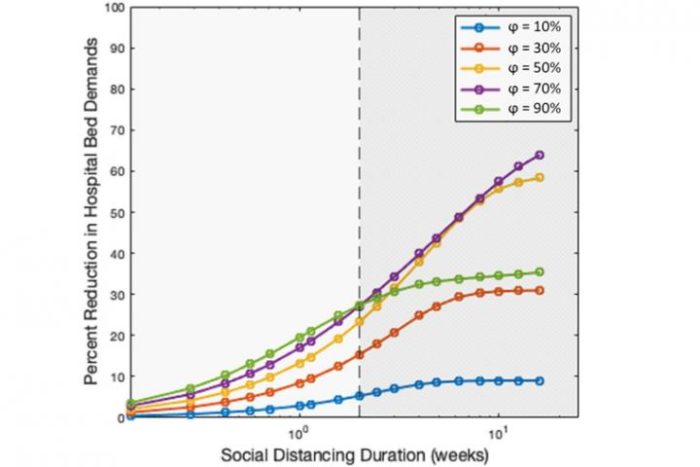 As the pandemic goes into its 5th month in the US it’s important that we do not suffer from pandemic fatigue. As I wrote previously, this is a marathon, not a sprint. In the US all indications are that we are failing, miserably. As of right now the world has suffered 13.7 million cases of COVID-19 and 587,000 deaths. The US has had almost 3.5 million of those cases, and 137,000 deaths. These numbers are certainly underestimates. While most other industrialized nations are winding down their cases and safely returning to life as normal, cases continue to rise in the US and are spiking in some states.
As the pandemic goes into its 5th month in the US it’s important that we do not suffer from pandemic fatigue. As I wrote previously, this is a marathon, not a sprint. In the US all indications are that we are failing, miserably. As of right now the world has suffered 13.7 million cases of COVID-19 and 587,000 deaths. The US has had almost 3.5 million of those cases, and 137,000 deaths. These numbers are certainly underestimates. While most other industrialized nations are winding down their cases and safely returning to life as normal, cases continue to rise in the US and are spiking in some states.
The bright side of this story is the massive scientific effort to study this virus and understand how to prevent and treat it. The science has been steadily progressing, and it is now clear what we need to do to stop the pandemic. All that is required is political will. Here are some very recent studies that reinforce what we now know.
First – masks work. They really do. They protect the wearer a little bit, and they protect other people a lot. This is because the virus is spread mostly in small droplets of fluid that are directly spread from one person to another. When you talk to someone, you are spraying them with these tiny droplets. When you wear a mask, this is mostly blocked. To add to the data that masks work, a recent study looked at infection rates among health care workers at MGB hospital. They found a dramatic decrease in infection rate once universal mask wearing was mandated.
The pushback against maskwearing seems particularly irrational. We are in the middle of a deadly pandemic. Wearing a mask is a small sacrifice that is a courtesy to those around you, mostly to minimize the chance that you infect them. Not wearing a mask is essentially a choice that your personal liberty is so important, you won’t bring yourself to take a small measure that will reduce the chance that you kill other people with your germs and perpetuate the broader pandemic.
Continue Reading »
Jul
14
2020
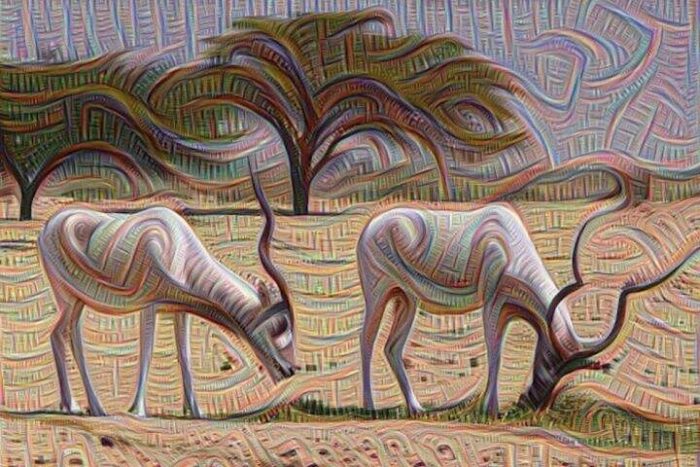 Try to conjure up a mental image of a bicycle (without referencing a picture). Better yet, try to draw a bicycle. Most people (75% or more) cannot draw an accurate bicycle from memory. There are a lot of layers here. First, people tend to grossly overestimate their specific or technical knowledge, especially of everyday objects and processes. I often like to challenge myself with the caveman thought experiment. If I suddenly found myself 20,000 years in the past living with pretechnological humans, how much technology could I bootstrap from my own knowledge? The answer is – surprisingly little (unless you are an expert in such things).
Try to conjure up a mental image of a bicycle (without referencing a picture). Better yet, try to draw a bicycle. Most people (75% or more) cannot draw an accurate bicycle from memory. There are a lot of layers here. First, people tend to grossly overestimate their specific or technical knowledge, especially of everyday objects and processes. I often like to challenge myself with the caveman thought experiment. If I suddenly found myself 20,000 years in the past living with pretechnological humans, how much technology could I bootstrap from my own knowledge? The answer is – surprisingly little (unless you are an expert in such things).
There is also the fact that we tend to overestimate the detailed accuracy of our memories. How many times have you seen a bike, and yet you cannot conjure up an accurate image of one in your brain. Perception itself is also limited – we tend to see what we pay attention to, and perception is highly filtered through our memory and expectation. I experienced this first hand when I started birding. Birds I had lived with my entire life suddenly became visible to me.
There is also the layer of – what is the neurological difference between imagining and seeing? Neuroscientists have already demonstrated that when we imagine or remember an image we use the same visual cortex as when we actually see an image. This makes sense because the visual cortex is organized in order to represent visual images, whether we are seeing, remembering, or imagining those images. In fact, there is probably little to no difference between remembering and imagining, but that is a topic for another day. What I want to explore further is a recent study that looked at the difference between seeing and imagining.
The researchers addressed this question in two ways. First they used a neural network designed to create and process images, and further designed to mimic the functional organization of the human brain. Specifically the neural network had basic or primary visual processing, and then more higher level visual processing. The researchers found that when creating an image the system activated the primary visual processing more diffusely but in less detail then when “seeing” an image. The researchers used this as a prediction and then studies human brains with fMRI to see if the computer model predicted human brain activity.
Continue Reading »
Jul
10
2020
The graph, by itself, tells much of the story. We are still in the first wave of COVID-19, but the US is seeing a second hump to that wave. We are having the highest number of new cases right now, five months into this pandemic. A few months ago we hoped that by July we would start to see the tail end of this first wave, while we anxiously await a possible second wave in the fall, but instead we are seeing a surge. What is happening?
 It’s always challenging to clearly see what is going when we are still in the middle of this pandemic, and our information is always a couple of weeks behind reality. But infectious disease experts and epidemiologists are seeing some patterns and are all expressing the same concerns. First, part of what we are seeing is just the natural course of this pandemic. In the US it largely started in urban centers with airports. NY had multiple introductions of the virus from Europe, for example. For this reason they were hit early and hard, while rural America was largely unscathed.
It’s always challenging to clearly see what is going when we are still in the middle of this pandemic, and our information is always a couple of weeks behind reality. But infectious disease experts and epidemiologists are seeing some patterns and are all expressing the same concerns. First, part of what we are seeing is just the natural course of this pandemic. In the US it largely started in urban centers with airports. NY had multiple introductions of the virus from Europe, for example. For this reason they were hit early and hard, while rural America was largely unscathed.
But the wave has moved through those urban centers into the rest of the US. Part of the problem is that, if you look at pooled US data it looked in May and into June that the death toll was declining and new cases were also declining. This created the false impression that, as a country, we were seeing the end of the first wave and we could start opening up. Plus there were legitimate concerns about the effect on the economy of prolonged shutdown, and understandably people were getting lockdown fatigue. But the total US numbers did not tell the full story. In April, as total US numbers started to go down, if you just removed New York from the data the rest of the 49 states were still going up. New York City, which was hit very early, was distorting the data. In May and June all you had to do was remove NY, CT, NJ, and MA from the data, and the other 46 states were increasing. But the illusion that the first wave was winding down had its effect.
Continue Reading »
Jul
09
2020
If you have not seen this video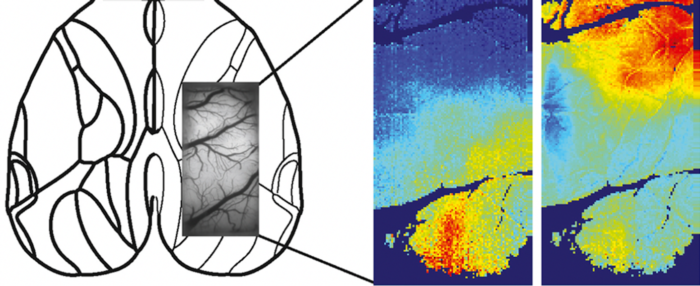 of students passing basketballs around, watch it now before reading further.
of students passing basketballs around, watch it now before reading further.
The now famous video, from Simons 1999, is a demonstration of inattentional blindness. There is no trick here, just a demonstration of normal brain functioning. When we are focusing our attention on one type of stimuli we can filter out “distracting” stimuli that doesn’t fit the parameters. In the basketball example you were instructed to pay attention to the students in white, so your brain flagged the students in black as distracting information. The gorilla, which is also black, was therefore filtered out as well (for about 40% of subjects).
Interestingly, often people take pride in having noticed the gorilla, but this is not necessarily a manifestation of having better attention. In fact noticing the gorilla, if anything, might mean you are more distractable and have worse attention (it also can be mostly random chance). The brain is supposed to filter out extraneous stimulation, otherwise we would not be able to function. Those suffering from traumatic brain injury, for example, often complain that they cannot filter out distracting sensory stimuli, so they find noisy or busy environments (like crowds) very uncomfortable. They may not be able to focus on work unless they are in a distraction-free environment. It’s impairing.
In other words – in the experimental setup of the students passing around the basketballs, not noticing the gorilla was an active step of filtration by the brain, not a failure to notice the gorilla. Such inattentional blindness is now experimentally well-established. Actually (interesting story) the first experiments demonstrating inattentional blindness were in 1959, but they were accidental. Paranormal researcher Tony Cornell published a couple of experiments regarding people noticing a subject wearing a ghost costume, and found that surprisingly few people did. He interpreted the results incorrectly, as evidence that a person in a sheet lacked the psi phenomena of a “real” ghost, but now we can look back and clearly see inattentional blindness at work.
Continue Reading »
 The evidence for this has been building over the last few years, and we are now at the point where it is reasonable to act on the evidence. Replacing wood, plastic, and stainless steel surfaces in hospitals with those either made of copper or embedded with copper significantly reduces bacteria and viruses (microbial burden, or MB) on those surfaces.
The evidence for this has been building over the last few years, and we are now at the point where it is reasonable to act on the evidence. Replacing wood, plastic, and stainless steel surfaces in hospitals with those either made of copper or embedded with copper significantly reduces bacteria and viruses (microbial burden, or MB) on those surfaces.
 The Alaska Supreme Court
The Alaska Supreme Court  There are various (non-mutually exclusive)
There are various (non-mutually exclusive)  One of the challenges of dealing with the COVID-19 pandemic, both on an individual patient level and public health level, is that this is a novel virus. We don’t yet have a lot of experience with it or clinical data about how it behaves, what it is capable of doing, and how the immune system deals with it. We are learning fast, but there is still much we don’t know, especially, of course, about long term effects.
One of the challenges of dealing with the COVID-19 pandemic, both on an individual patient level and public health level, is that this is a novel virus. We don’t yet have a lot of experience with it or clinical data about how it behaves, what it is capable of doing, and how the immune system deals with it. We are learning fast, but there is still much we don’t know, especially, of course, about long term effects. Here’s another brain glitch that I know I do on a regular basis – confusing the intention to do a task with having actually completed the task. This is a type of false memory created by the intention itself. Albarracin et al
Here’s another brain glitch that I know I do on a regular basis – confusing the intention to do a task with having actually completed the task. This is a type of false memory created by the intention itself. Albarracin et al  I often discuss the fact that the world’s population is set to approach 10 billion people by 2060 or so. Right now we are approaching 8 billion. This is a potentially serious issue, mainly for food security. We are already using most of the arable land on the planet, and will need to produce more food on the same, or hopefully less, land if we are to sustain these populations without devastating ecosystems (more than we already have). We also need to produce enough energy and goods while dealing with that whole global warming thing. So many people might find it interesting that some scientists are warning about a
I often discuss the fact that the world’s population is set to approach 10 billion people by 2060 or so. Right now we are approaching 8 billion. This is a potentially serious issue, mainly for food security. We are already using most of the arable land on the planet, and will need to produce more food on the same, or hopefully less, land if we are to sustain these populations without devastating ecosystems (more than we already have). We also need to produce enough energy and goods while dealing with that whole global warming thing. So many people might find it interesting that some scientists are warning about a  As the pandemic goes into its 5th month in the US it’s important that we do not suffer from pandemic fatigue.
As the pandemic goes into its 5th month in the US it’s important that we do not suffer from pandemic fatigue.  Try to conjure up a mental image of a bicycle (without referencing a picture). Better yet, try to draw a bicycle. Most people (75% or more)
Try to conjure up a mental image of a bicycle (without referencing a picture). Better yet, try to draw a bicycle. Most people (75% or more)  It’s always challenging to clearly see what is going when we are still in the middle of this pandemic, and our information is always a couple of weeks behind reality. But infectious disease experts and epidemiologists are seeing some patterns and are all expressing the same concerns. First, part of what we are seeing is just the natural course of this pandemic. In the US it largely started in urban centers with airports. NY had multiple introductions of the virus from Europe, for example. For this reason they were hit early and hard, while rural America was largely unscathed.
It’s always challenging to clearly see what is going when we are still in the middle of this pandemic, and our information is always a couple of weeks behind reality. But infectious disease experts and epidemiologists are seeing some patterns and are all expressing the same concerns. First, part of what we are seeing is just the natural course of this pandemic. In the US it largely started in urban centers with airports. NY had multiple introductions of the virus from Europe, for example. For this reason they were hit early and hard, while rural America was largely unscathed.





